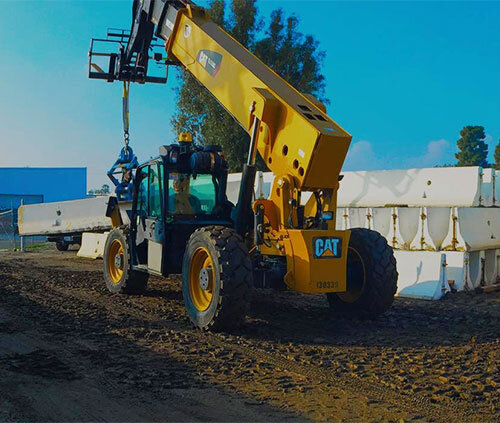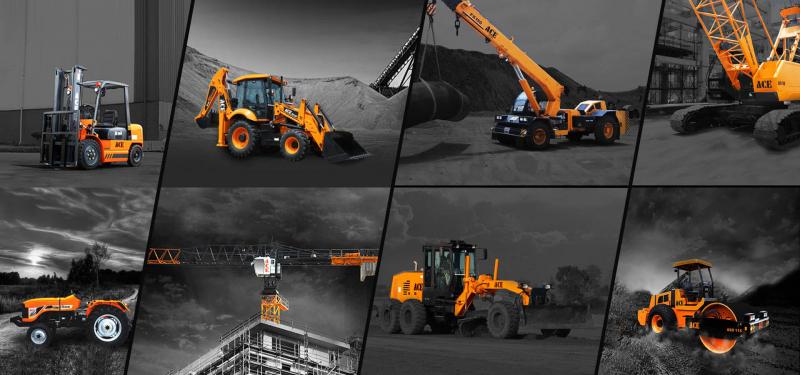Forklift Rental: Heavy Lifting Equipment for Warehousing and Extra
Wiki Article
Maximize Your Budget by Comprehending the Expenses Connected With Building And Construction Equipment Services
Comprehending the full extent of expenses associated with building and construction tools rentals is important for optimizing your budget. What strategies can be utilized to successfully handle these costs and make sure a more effective rental experience?Summary of Rental Expenses
When thinking about building and construction equipment leasings, comprehending the linked costs is vital for reliable budgeting and task planning. Rental expenses can vary substantially based upon a number of factors, consisting of tools type, period of service, and location. The first rental fee often shows the tools's market need and its associated operational capabilities, influencing the overall cost.Along with the base rental price, ancillary prices may emerge, such as transportation charges, fuel additional charges, and maintenance costs. It is necessary to represent these added expenses to properly examine the overall cost of renting equipment. The rental duration can affect rates; longer rentals might certify for affordable rates, while short-term rentals could incur greater day-to-day charges.

Break Down of Rental Prices
An extensive understanding of rental prices is necessary for professionals and task supervisors intending to maximize their budgets. Rental rates for construction equipment typically contain several parts, consisting of base prices, time-based fees, and use fees.Base rates are the core costs connected with the rental of the equipment, often identified by the type and dimension of the machinery. These prices can differ considerably, influenced by elements such as tools need, availability, and local market fads. Time-based fees, which might be daily, weekly, or monthly, serve to fit various project timelines and rental durations.
In addition, rental rates might consist of use costs, which apply when tools is utilized beyond a defined threshold, ensuring that the rental firm can make up deterioration. Seasonal need fluctuations can also influence rental rates, with peak construction periods typically regulating higher costs.
Furthermore, recognizing the rental firm's plans regarding maintenance and insurance can provide further understanding right into the overall cost framework. By examining these components, service providers can make informed choices, ensuring the choice of rental tools aligns with both task needs and budget restrictions.
Added Fees to Think About
Understanding the intricacies of extra charges is important for professionals to handle their overall rental expenditures effectively. Past the common rental prices, numerous additional charges can dramatically impact the total price of tools service. These fees typically consist of distribution and pick-up fees, which can differ based on distance and logistics included in transferring the equipment to and from the task website.Additionally, some rental firms may enforce gas additional charges if the devices is returned with less fuel than when leased. It is also important to know prospective cleaning charges, especially for customized equipment that requires extensive maintenance after use.

Completely examining the rental agreement and clarifying these added fees in advance can help contractors make sure and avoid unexpected costs that spending plans stay intact throughout the job lifecycle.
Upkeep and Repair Service Expenditures
Routine maintenance and fixing expenditures are typically ignored elements that can dramatically affect the general cost of building tools services. When renting out equipment, it is critical to consider not just the rental charges yet also the possible prices connected with keeping the machinery in ideal operating condition.Several rental companies consist of basic maintenance as part of the rental arrangement; nevertheless, extra unforeseen break downs or substantial repair services can result in additional expenditures. It's vital to examine the rental agreement carefully to recognize what upkeep services are covered and what responsibilities drop on the tenant.
Furthermore, equipment that is not well-maintained can result in inefficiencies on duty site, possibly increasing and creating hold-ups job prices. To alleviate these threats, it is advisable to carry out normal inspections and maintain open interaction with the rental provider pertaining to any issues that occur throughout usage.
Insurance and Liability Expenses
Insurance coverage used compact wheel loader and obligation prices are important components that can substantially impact the total expense of building and construction equipment services (mini excavator rental). These expenses guarantee that both the rental company and the customer are protected you could look here from possible financial losses emerging from accidents, damages, or burglary throughout the rental period
In addition, clients need to be conscious of any type of deductibles or exemptions in the insurance coverage policy, as these can affect potential out-of-pocket expenses. Recognizing the conditions of any type of insurance policy protection is essential to prevent unexpected costs. Eventually, budgeting for insurance coverage and liability costs can help guarantee a smoother rental experience and shield against economic threats connected with building tasks.
Verdict
In verdict, a comprehensive understanding of the prices linked with construction devices rentals is crucial for efficient budget plan administration. Inevitably, notified decision-making relating to tools leasings adds to the overall success of building endeavors.Rental prices can vary significantly based on several factors, including tools click kind, duration of rental, and area (aerial lift rental). The rental period can impact prices; longer services might qualify for discounted rates, while short-term leasings could incur greater day-to-day fees
By carrying out comprehensive research study and engaging with trusted rental companies, contractors can properly navigate the complexities of rental prices, eventually optimizing their economic sources.
Past the conventional rental rates, numerous auxiliary costs can considerably influence the complete price of devices service. Rental firms often give obligation insurance that covers injuries to 3rd celebrations or damages to residential or commercial property, while devices damages insurance policy can cover the expense of repair services or replacement if the rented devices is harmed.
Report this wiki page